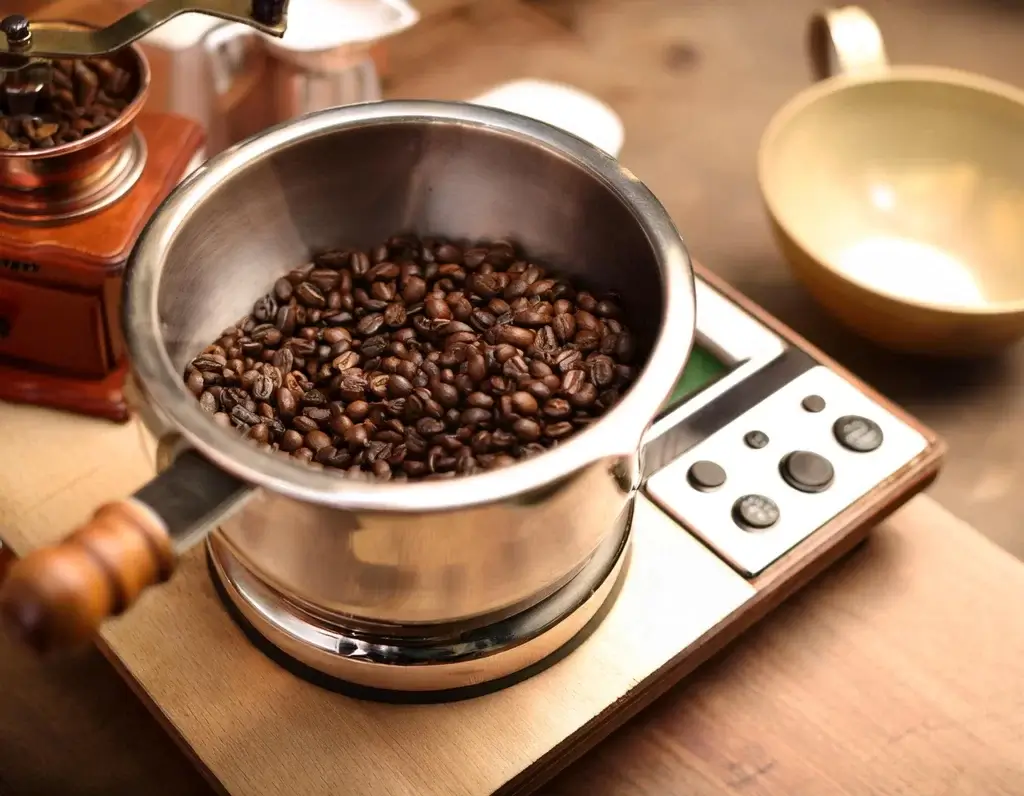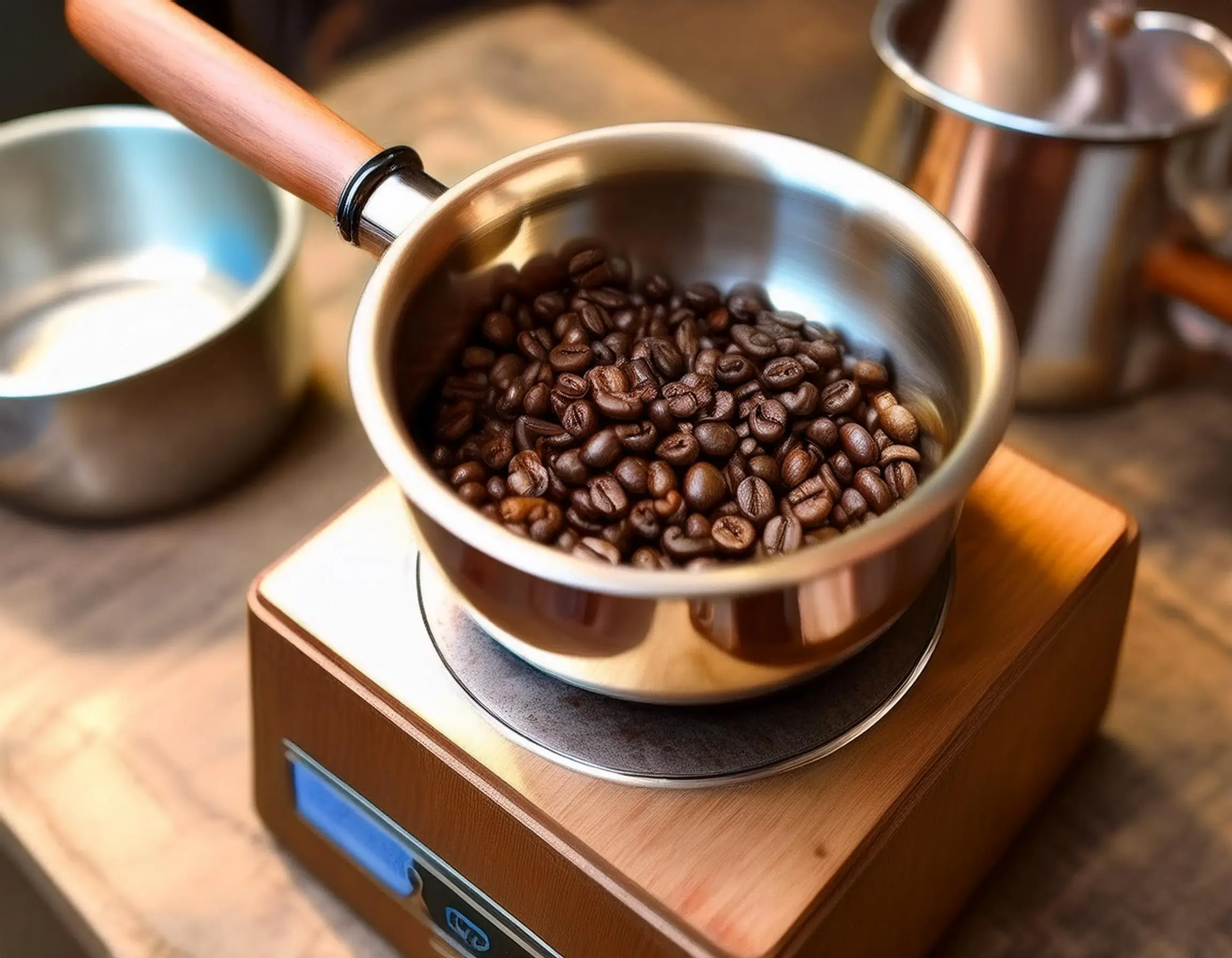For many coffee enthusiasts, precision is key to achieving the perfect cup. While scales provide a reliable method for measuring coffee grounds and water, they aren’t always at hand, or perhaps you’re just looking for a more intuitive approach to brewing. Whether you’re camping in the great outdoors, traveling, or simply want to embrace the art of coffee-making without the gadgets, there are plenty of techniques to create a delicious cup of joe.
Coffee-to-Water Ratios
When it comes to brewing the perfect cup of coffee, understanding coffee-to-water ratios is essential, especially if you’re navigating the art of coffee making without the precision of a scale. The general rule of thumb is to aim for a ratio of about 1:15 to 1:18, which translates to one part coffee to 15 to 18 parts water. This formula can be adjusted based on personal taste preferences, the brewing method, and the type of coffee being used.
To visualize this without measuring tools, consider the common measurements of coffee grounds. For a standard 8-ounce cup of coffee, you’ll want to use approximately two tablespoons (about 10-12 grams) of ground coffee for a lighter brew, or increase to three tablespoons for a richer flavor. This simple method allows you to gauge your coffee without needing a scale, relying instead on familiar measurements.
Estimating Coffee Grounds: The Spoon Method
When it comes to brewing the perfect cup of coffee, precision is important, but not everyone has a scale handy. Fortunately, you can still achieve a well-balanced brew using the trusty spoon method. This approach relies on common kitchen utensils to estimate the right amount of coffee grounds, making it ideal for those who prefer a more intuitive brewing experience.
To start, it’s essential to understand that coffee’s strength and flavor can vary significantly based on the grind size and the coffee-to-water ratio. A general guideline is to use about two tablespoons of coffee per six ounces of water. This ratio can serve as a foundation, but feel free to adjust based on your taste preferences.
When measuring coffee grounds with a spoon, it’s crucial to use a standard tablespoon, which holds roughly 5 to 7 grams of coffee, depending on the grind. For a balanced cup, aim for about two heaping tablespoons of medium-ground coffee for every six ounces of water. If you prefer a stronger brew, you might opt for three tablespoons, while a milder cup might only require one and a half.
Using Visual Cues for Water Measurement
When it comes to making coffee without a scale, using visual cues for water measurement can be a game changer. This method relies on simple and intuitive techniques that help you achieve a delicious brew without the need for precise measurements. Begin by selecting a clear glass or a measuring cup that allows you to see the water level easily. As a general rule, a good starting point is the standard coffee-to-water ratio of 1:15. For 1 cup of coffee, you’ll want to use approximately 6 ounces of water.
To measure your water visually, fill your cup or glass to the 6-ounce mark. If your vessel doesn’t have measurement markings, a common trick is to use a standard coffee mug, which typically holds around 12-14 ounces. In this case, simply fill your mug halfway for a single cup of coffee.
Adjusting for Personal Taste Preferences
From here, you can adjust based on your taste. If your coffee tastes too weak, incrementally increase the coffee amount, perhaps adding an extra tablespoon each brew until you find that perfect balance. Conversely, if your cup is too strong, reduce the quantity of coffee gradually.
Another way to finetune your brew is to experiment with grind size. A coarser grind generally results in a milder flavor, while a finer grind can intensify the coffee’s richness. So, if you find your coffee lacking in flavor, try adjusting the grind size along with the amount you use.
How To Make Pour Over Coffee Without A Scale?

Making pour-over coffee without a scale may seem daunting at first, but it’s entirely achievable with a few simple techniques and some basic measurements. The beauty of pour-over brewing lies in its ability to emphasize the nuances of your coffee, and you can still achieve a delicious cup without the precision of a scale.
Start by selecting your coffee beans. A medium roast is often ideal for pour-over, as it strikes a balanced flavor profile. Once you have your beans, a good rule of thumb is to use a standard coffee-to-water ratio. If you don’t have a scale handy, a general guideline is to use one to two tablespoons of coffee grounds for every six ounces of water. This can vary depending on your taste preferences, but it’s a solid starting point.
To measure your coffee, you can use a tablespoon or a coffee scoop. If you’re brewing a single cup, one tablespoon of coffee will yield a lighter brew, while two tablespoons will result in a richer, more robust flavor. After measuring your coffee, grind the beans to a medium-coarse consistency, similar to granulated sugar, which allows for optimal extraction during the pour-over process.
How To Measure Coffee Beans Without A Scale?
Measuring coffee beans without a scale might initially seem daunting, but with a few practical methods, you can achieve the perfect brew every time. One of the simplest ways is to use a standard tablespoon. Most coffee enthusiasts recommend a ratio of about two tablespoons of coffee for every six ounces of water. This guideline provides a solid foundation for brewing a balanced cup, allowing you to adjust according to your taste preferences. If you prefer a stronger brew, try adding an extra half tablespoon.
The “eye” method is a popular approach among seasoned coffee brewers. With practice, you can learn to visually estimate how much coffee you need based on the size and shape of your container. While it might take a little trial and error initially, you’ll become more confident in your measurements over time.
How To Make French Press Coffee Without A Scale?
Making French press coffee without a scale is not only possible, but it can also be a delightful and intuitive process. To start, you’ll want to gather your ingredients and tools: coarsely ground coffee, freshly boiled water, a French press, and a stirring utensil. While precision may be the hallmark of a perfect brew, relying on simple measurements and your taste preferences can lead to equally satisfying results.
Begin by using a standard coffee measurement ratio as a guideline. A good rule of thumb is to use about 1 to 2 tablespoons of coffee for every 6 ounces of water. If you don’t have a tablespoon handy, you can use your coffee mug as a makeshift measuring tool. For a stronger cup, opt for 2 tablespoons; for a milder flavor, stick to 1 tablespoon.
